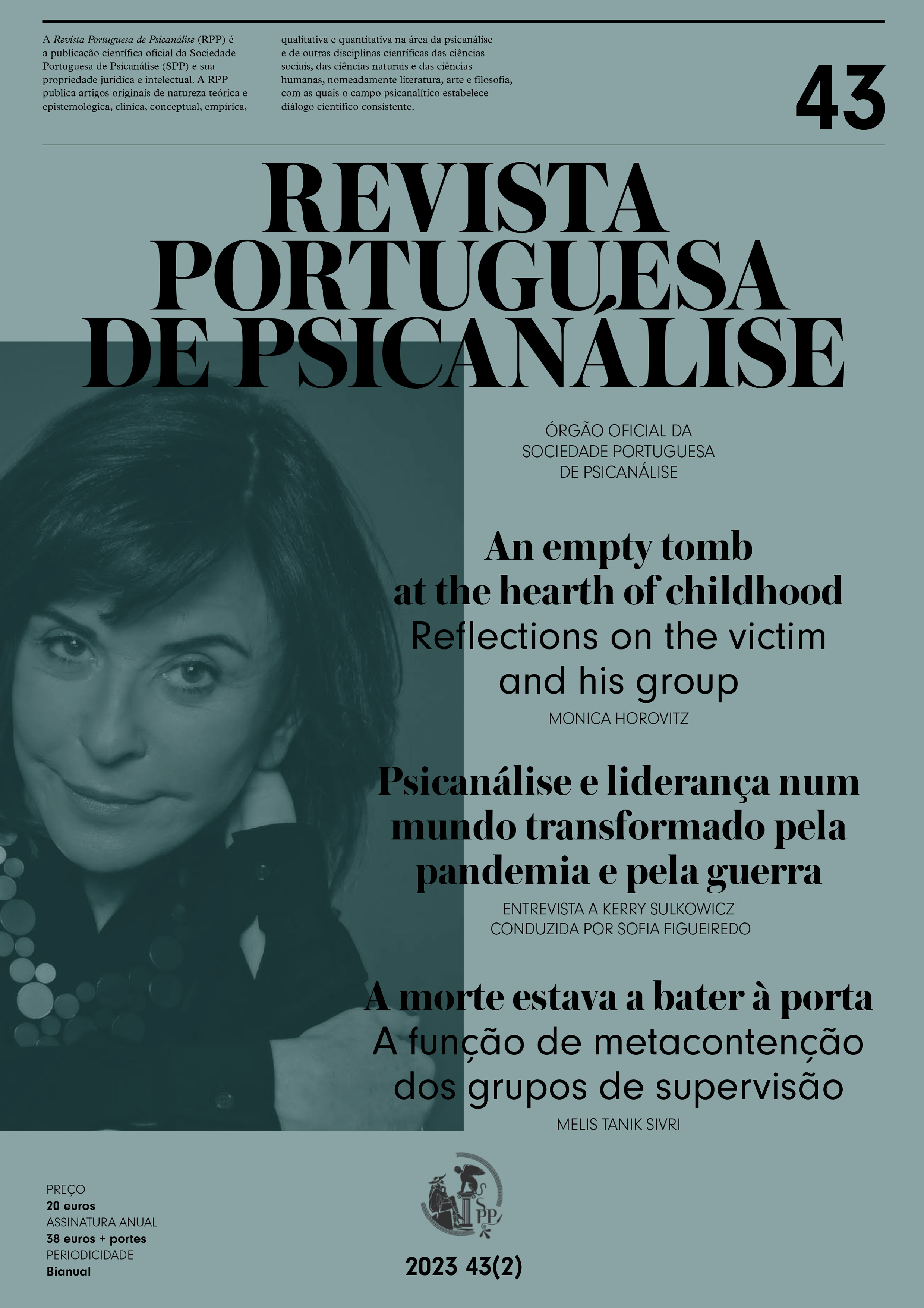Death was knocking on the door: The meta-containing function of supervision groups in working with victims of trauma

Résumé
La mort frappait à la porte: La fonction méta-contenant des groupes de supervision
L’augmentation de la violence et de la destruction dans le monde soulève de nouvelles questions sur la théorie et la technique dans le domaine de la psychanalyse. L’objectif de cet article est de discuter de l’importance de la fonction méta-contenant des groupes de supervision dans le cadre du travail avec des victimes de traumatismes. Pour illustrer cela, nous donnerons des exemples tirés d’un processus de groupe de surveillance volontaire qui a été mis en place après une série d’attentats terroristes en Turquie. Les événements traumatiques, exprimés dans le monde extérieur et observés au cours des séances, peuvent entraver la fonction de contenance du thérapeute, ce qui peut rendre impossible de « penser sous le feu » alors que « la mort frappe à la porte ». En travaillant sur les sentiments contradictoires de la victime du traumatisme, amenés au processus de groupe de supervision par le mécanisme de l’identification projective, une compréhension plus profonde du patient est obtenue et les « angles morts » du thérapeute sont découverts. Au fur et à mesure que la dyade thérapeute-victime du traumatisme passe de « l’action » à l’acquisition de niveaux plus élevés de symbolisation, le processus thérapeutique s’approfondit, le travail de deuil est activé et, dans certains cas, les symptômes sont éliminés et une meilleure adaptation au monde extérieur est observée.
Mots-clés
conteneur-contenu, fonction méta-contenante , rêverie, supervision, traumatisme
Biographie de l'auteur
Melis Tanik Sivri
Psicanalista didata da Psike Istanbul e Membro europeu da Cowap. É também Editora-Chefe dos livros anuais do The International Journal of Psychoanalysis.
Références
- Bergstein, A. (2013). Transcending the caesura. The International Journal of Psychoanalysis, 94, 621–644.
- Bion,W. (1957). On arrogance. The International Journal of Psychoanalysis, 39, 144–146.
- Bion,W. (1959). Attacks on linking. The International Journal of Psychoanalysis, 40, 308–315.
- Bion, W. (1961a). Experiences in Groups and Other Papers. Tavistock.
- Bion, W. (1962a). The psychoanalytic study of thinking. The International Journal of Psychoanalysis, 43, 306–310.
- Bion,W. (1962b) Learning from Experience. Karnac Books.
- Bion, W. (1967). A theory of thinking. In Second Thoughts (pp.178–186). Heinemann. (Original publicado em 1961).
- Bion, W. (1997). War Memoires 1917-1919. Karnac Books.
- Brown, L. (2012). Bion’s discovery of alpha
- function:Thinking under fire on the battlefield and in the consulting room. The International Journal of Psychoanalysis, 93, 1191–1214.
- Freud, S. (1920). Beyond the pleasure principle. Em The Standard Edition of the Complete PsychologicalWorks of Sigmund Freud, vol. 18 (pp. 3–64). Hogarth Press.
- Guignard, F. (2002). A stroll through the preconscious. Consultado em 17 de julho de 2023, em http://www.ercankesal.com/sevdigim-yazilar/bilinconcesinde-bir-gezinti/
- Joannidis, C. (2000). Sharing the unconscious phantasy:The therapist’s emotional reaction to the group as-a-whole. Group Analysis, 33 (2), pp. 209–220.
- Klein, M. (1940). Mourning and its relation to manic-depressive states. The International Journal of Psychoanalysis, 21, 125–153.
- Leuzinger-Bohleber, M., Rickmeyer, C., Tahiri, M., Hettich, N. & Fischmann,T. (2016).What can psychoanalysis contribute to the current refugee crisis? Preliminary reports from STEP-BY-STEP: A psychoanalytic pilot project for supporting refugees in a “first reception camp” and crisis interventions with traumatized refugees. The International Journal of Psychoanalysis, 97, 1077–1093.
- Roper, M. (2012). Beyond containing: World War I and the psychoanalytic theories of Wilfred Bion. Em S. Alexander & B.Taylor (Eds.), History and psyche – Culture, psychoanalysis, and the past (pp.129–147). Palgrave Macmillan.
- Souter, K. M. (2009). The War Memoirs: Some origins of the thought of W. R. Bion. The International Journal of Psychoanalysis, 90, 795–808.
- Segal, H. (1952). A psycho-analytical approach to aesthetics. The International Journal of Psychoanalysis, 33, 196–207.
- Szykierski, D. (2010). The traumatic roots of containment:The evolution of Bion’s metapsychology. The Psychoanalytic Quarterly, 79, 935–968.
- Winnicott, D. W. (1951). Transitional objects and transitional phenomena. A study of the first not-me possession. The International Journal of Psychoanalysis, 34, 89–97.
- Triest, J. (2016). Individual and Collective Dimensions of Trauma: When the (Unconscious) Nightmare Becomes Reality. Conferência proferida em Istambul. Novembro de 2016.